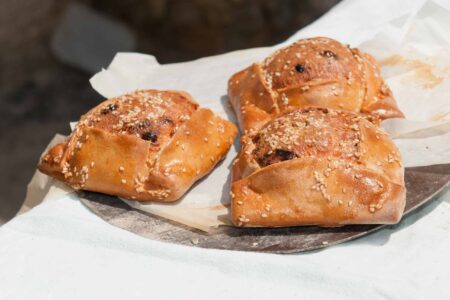Kolossi is a medieval castle near Limassol, deeply connected to the history of Cyprus and the influence of the Crusaders. It witnessed Richard the Lionheart’s conquests, the roles of the Knights Templar and Hospitallers, and the flourishing of winemaking and sugar production. Surrounded by fertile lands, it served as a strategic stronghold in the island’s political and economic life. The fortress bears traces of various eras, from Frankish rule to successive regimes. Visitors can admire its imposing walls while feeling the ancient atmosphere that links the past to the present. With its thoughtful architecture and scenic surroundings, Kolossi continues to amaze guests, blending traditions, spiritual heritage, and pragmatic economic significance.
Contents
- 1 Overview and Architectural Features
- 2 Historical Context and the Crusaders
- 3 Conflict with Isaac Komnenos and Richard’s Role
- 4 Military Confrontation and Its Aftermath
- 5 Strategic Importance of Cyprus and the Appointment of Governors
- 6 The Role of the Templars and Hospitallers
- 7 Assizes and the Feudal System
- 8 The Origins of the Templars and Hospitallers
- 9 Kolossi and Its Connection to the Knightly Orders
- 10 Dynastic Intrigues and the Castle’s Transition
- 11 Changes in Ownership and the Dissolution of the Templars
- 12 The Commandery and the Development of Winemaking
- 13 Exploring the Castle and Its Surroundings
- 14 Interior Layout and Decorations
- 15 The Lusignan Coat of Arms and Other Symbols
- 16 The Commandery’s Economic Significance
- 17 Ceremonies and the Order of St. John
- 18 Archaeological Excavations and the Sugar Mill
- 19 Subsequent Changes and Earthquakes
- 20 The Church of Saint Eustathios and Religious Monuments
- 21 A Tapestry of Cyprus’s Heritage
Overview and Architectural Features
Situated approximately 14 kilometers west of Limassol, Kolossi Castle is a robust three-story limestone structure built in the early 13th century during the Frankish rule of Cyprus. While its original design took shape in this period, its current form dates to the 15th century. Later centuries also left their mark, with additional features added during Ottoman rule from the late 16th to the 19th century. Thus, Kolossi exemplifies military-defensive architecture that reflects different historical periods.
Nearby, visitors will find other intriguing landmarks, including the Byzantine Church of Saint Eustathios, the remnants of a once-active sugar mill, and an aqueduct. These elements immerse visitors in a unique historical setting tied to sugarcane cultivation and winemaking traditions, particularly the renowned Commandaria wine.

Historical Context and the Crusaders
Kolossi’s significance goes beyond local history. During the Crusades, Cyprus became a strategic point for European monarchs and knightly orders. The Third Crusade (1189–1192) brought together England’s Richard the Lionheart, France’s Philip Augustus, and the Holy Roman Emperor Frederick Barbarossa in their effort to reclaim the Holy Land.
While their routes traversed the Mediterranean, Richard’s fleet encountered severe storms that stranded some ships on Cyprus’s shores. This event highlighted the island’s strategic importance. Among those stranded were Richard’s bride Berengaria and his sister Joanna of Sicily, prompting the local ruler Isaac Komnenos to attempt to take advantage of the situation.
Conflict with Isaac Komnenos and Richard’s Role
Isaac Komnenos, who had declared Cyprus independent from Byzantium, proved unpredictable. When four of Richard’s ships were washed ashore, Isaac not only failed to assist the survivors but also looted their belongings and tried to capture Berengaria and Joanna. Isaac’s alliance with Saladin, the Sultan of Egypt and Syria, likely motivated his hostility toward the Crusaders.
However, Isaac’s plans collapsed when Richard arrived from Rhodes a month later. Negotiations failed as Isaac refused Richard’s demands, hoping to maintain his independence. In response, Richard turned to military action.
Military Confrontation and Its Aftermath
Angered by Isaac’s defiance, Richard led a force of approximately 600 knights to Kolossi, where Isaac had prepared for battle. Richard’s forces prevailed, and Isaac retreated to Nicosia. This victory allowed Richard to secure control over Cyprus’s coastal areas and Limassol.
Richard’s triumph enabled him to proceed with his campaign safely. On May 12, 1191, he married Berengaria in a symbolic ceremony. While some scholars question whether the ceremony took place within the castle walls (it may have been in Saint George’s Chapel at another location), the marriage marked a significant moment. It was the first time an English queen was crowned outside England, underscoring Cyprus’s growing strategic importance.
Strategic Importance of Cyprus and the Appointment of Governors
The conquest of Cyprus was crucial for the Crusaders, who needed a reliable supply base after losing their holdings in Acre. Cyprus became a vital platform for replenishing resources and planning further campaigns. Richard appointed two governors, replaced local troops with his forces, and established a feudal land system. He confiscated half the island’s lands from the native population, granting them to his vassals and introducing Frankish laws.
However, maintaining control over Cyprus proved challenging due to Richard’s limited manpower. To focus on his primary goal of liberating the Holy Land, he sold Cyprus to the Knights Templar for a substantial sum of gold coins.
The Role of the Templars and Hospitallers
The Templars struggled to govern Cyprus, facing resistance from the local population. Consequently, they sold the island to Guy de Lusignan, a French nobleman, who founded a dynasty that ruled Cyprus for 300 years until 1489.
Foreign knightly orders, particularly the Templars and Hospitallers (Knights of St. John), played a pivotal role in stabilizing Cyprus. They were granted privileges, lands, mills, and feudal rights, helping maintain order and control over the population. Their presence reflected the rulers’ aim to ensure stability and reinforce their authority.

Assizes and the Feudal System
The Frankish dynasty introduced new laws and customs known as the Assizes. These regulations, developed in the 12th century and recorded in French during the 13th century by historians Jean d’Ibelin and Philip of Novara, were later translated into Greek for local administration. The Assizes formed the foundation of Cyprus’s feudal society, governing relationships among the nobility, knightly orders, and the local population.
Simultaneously, important historical records, such as the chronicles of Leontios Macheras and Bustronios, preserved key events of the era. These legal and literary contributions strengthened ties between diverse cultures, traditions, and religious perspectives on the island.
The Origins of the Templars and Hospitallers
To understand Kolossi’s connection to the orders, it is essential to explore the history of the Templars and Hospitallers. The Templars were founded in 1118 in France to protect pilgrims traveling to the Holy Land. The name of the order derives from the Latin word templum, as the knights were based near the sacred Temple of Solomon. Over time, the Templars gained special privileges, acquired substantial landholdings across Europe, and even pioneered banking operations. After the Crusaders captured Acre, the Templars moved their base to Cyprus.
Meanwhile, the Hospitallers, also known as the Knights of St. John, are one of the oldest knightly orders. Their origins date back to the 6th century, when Pope Gregory the Great authorized their creation. Initially focused on aiding pilgrims, the Hospitallers later adopted a military role. Following the fall of Jerusalem, they strengthened their position in Acre before eventually relocating to Cyprus.
Kolossi and Its Connection to the Knightly Orders
Kolossi Castle was closely tied to the knightly orders of the Templars and Hospitallers. Ownership of the castle alternated between these two influential groups. Other fortifications, such as the castles at Chirokitia and Gastria, now in ruins, were also associated with them. The influence of these orders extended to Paphos, Limassol, Nicosia, and other regions of Cyprus.
Until 1210, the lands of Kolossi were owned by Garin de Colos. Later, King Hugh I acquired the territory and transferred it to the Hospitallers. According to historian Hill, the first fortress in Kolossi was constructed around this time. The Hospitallers were granted the right to mill grain at facilities in Kythrea, a system that helped consolidate the power of the Franks on the island. Thus, the presence of the Hospitallers contributed significantly to Cyprus’s economic and military stability.

Dynastic Intrigues and the Castle’s Transition
After the fall of Acre in 1291, both the Templars and Hospitallers moved their centers of operation to the Limassol area, with Kolossi becoming a focal point. In 1302, the head of the Hospitallers decided to make the castle a central hub for the order’s activities. However, in 1306, Amalric of Tyre, supported by the Grand Master of the Templars, seized power from his brother, King Henry II. During this period, Kolossi came under Templar control.
Amalric exploited Henry’s illness, epilepsy, and the support of influential nobles to secure his reign. However, his rule was short-lived; he was assassinated in 1310, and the throne returned to Henry II. Around the same time, the Templars faced mounting pressure from the papacy, other knightly orders, and the King of France, leading to accusations of heresy and eventual arrests.
Changes in Ownership and the Dissolution of the Templars
In 1310, the Templars were imprisoned in the Kyrenia fortress. The trial lasted three years, and many members of the order faced severe punishment. Ultimately, their assets, including Kolossi, were transferred to the Hospitallers. At that time, the Grand Master of the Hospitallers, Foulques de Villaret, moved the administrative center to Rhodes but retained Kolossi as a military residence.
The territory, known as the Commandery, included around 60 villages in the Limassol district. The Hospitallers thus gained extensive landholdings and stable sources of income. They actively produced sugar, oil, grain, cotton, and wine, including the famous Commandaria. This sweet wine, celebrated since Homeric times, gained worldwide fame, especially in England.
The Commandery and the Development of Winemaking
The Commandery at Kolossi was renowned for its fertile lands and abundant vineyards, which produced the exquisite Commandaria wine. The Hospitallers, skilled in viticulture, enhanced the reputation of this beverage. A significant portion of the wine was exported to the English court, where it was highly valued. By the 14th century, Cypriot wines, particularly Commandaria, were frequently mentioned in trade records.
This trade brought substantial profits to the Hospitallers and their allies. Meanwhile, nearby sugarcane plantations and a well-developed sugar mill further increased the region’s importance. As a result, the Kolossi area became a center of agricultural and commercial prosperity.

Exploring the Castle and Its Surroundings
Today, Kolossi Castle stands as a majestic structure surrounded by greenery. Nearby are gardens with local and exotic plants, including sugarcane. Two giant trees—a cypress and a machairium—dating back over 200 years can also be seen.
The current castle, built in 1454 under the command of Louis de Magnac, stands 21 meters tall. Each side measures approximately 16 meters externally and 13.5 meters internally. Nearby are the ruins of the original 13th-century castle and a well. The 15th-century reconstruction followed destructive raids by the Mamluks. The new structure was so robust that it was considered nearly impregnable.
Interior Layout and Decorations
Kolossi Castle consists of three floors. On the ground level are three vaulted halls connected by arched passages. The floor contains reservoirs for collecting water, and an interior staircase of 24 steps leads to the upper levels.
The second floor is divided into two rooms. The western hall contains a large fireplace, suggesting its use as a kitchen, while the eastern hall features a 15th–16th-century fresco depicting the Crucifixion, the Virgin Mary, and Saint John. The lower-left corner of the fresco includes the coat of arms of Louis de Magnac, represented by a trefoil.
A spiral stone staircase of 33 steps leads to the third floor, which is divided into two rooms used as a dining hall and a bedroom. These rooms also have fireplaces bearing de Magnac’s coat of arms. Large windows allow plenty of light to enter. Another staircase leads to the roof, equipped with battlements, offering panoramic views of the surrounding vineyards, citrus plantations, and the sea.
The Lusignan Coat of Arms and Other Symbols
On the eastern wall of the castle, visitors can see a marble plaque with the crown and complex coat of arms of the Lusignan kings of Cyprus. The shield is divided into four sections: one features the Jerusalem Cross, another displays the Lusignan lion, a third depicts the lions of Cyprus, and the fourth contains the lions of Lesser Armenia.
Flanking the shield are the coats of arms of the Hospitaller Grand Masters Jacques de Milly and Jean de Lastic, along with Louis de Magnac’s symbol. This blending of heraldic emblems reflects the intertwining interests of various rulers. Later, Kolossi passed to the Cornaro family, associated with the last queen of Cyprus, Catherine Cornaro. The family retained the title of Grand Commander even after losing the lands following the Ottoman conquest in 1571.

The Commandery’s Economic Significance
For many years, the Commandery at Kolossi remained the wealthiest possession of the knightly orders. Records indicate that in 1468, its revenues were sufficient to contribute 4,000 ducats annually to support the order on Rhodes.
During the early Venetian rule (1489), the Commandery encompassed 41 villages, generating 8,000 ducats annually. However, after the Ottoman conquest in 1571, the Cornaro family lost control of the lands but retained their title. The Cornaro lineage ended in 1799, though Count Mocenigo later claimed the title through marriage to an heir. The history of Kolossi’s estates reflects the complex political and economic realities of the era.
Ceremonies and the Order of St. John
In 1959, a year before Cyprus gained independence from Britain, a ceremonial event was held in the castle gardens. Three hundred guests, including Cyprus Governor Sir Hugh Foot, attended the gathering. The First Lord of the Order of St. John presented decorations, accompanied by trumpet fanfare, adding a medieval touch to the proceedings.
The Order of St. John has been active in Cyprus since 1926, supporting medical and charitable initiatives. The historical setting of Kolossi was a fitting backdrop for such an event, continuing the legacy of knightly traditions through symbolic ceremonies.
Archaeological Excavations and the Sugar Mill
Since 1992, archaeological excavations have been conducted east of the castle, where the ruins of a medieval sugar mill remain. The structures, dating to the 14th century, include limestone buildings with pointed domes. Inside were vats for boiling sugarcane juice, and nearby was a mill powered by water from the Kouris River via a medieval aqueduct.
Researchers believe the juice underwent multiple boilings to produce sugar of varying quality—the longer the process, the lighter the product. This method was also used by the Venetians. Sugarcane had been cultivated in Cyprus since the 10th century, and by the 13th century, production had significantly increased. Cypriot sugar was among the finest and highly prized in Mediterranean trade centers.
Subsequent Changes and Earthquakes
Natural disasters also played a role in shaping the fate of this region. A series of earthquakes in 1567 and 1568 caused significant damage to Limassol and the sugar mill. In 1591, Cypriot Pasha Murat repaired the mill, leaving an inscription on its outer wall. Archaeologists suggest that during the Ottoman and later British rule, the site was repurposed as a grain mill. Gradually, sugar production declined, and by the 17th century, historical sources mention only cotton and silk. Dutch traveler Cornelis van Bruyn, who visited the island in 1683, described the cultivation of cotton and silk but did not reference sugar. This shift reflects the changing economic priorities and the broader evolution of life on the island.
The Church of Saint Eustathios and Religious Monuments
About 100 meters from the castle stands the Byzantine Church of Saint Eustathios, built in the 12th century and reconstructed in the 15th century. The Hospitallers may have used this church, as the apse once featured the coat of arms of Louis de Magnac. British researcher R. Gunnis noted this detail in 1936.
The presence of the church near the castle highlights the layered historical landscape of the area. Here, religious traditions, cultural influences, and feudal-knightly interests intersected. Every element of this complex reflects the intricate network of interactions between different eras, rulers, and communities, making Kolossi one of the most significant symbols of Cyprus’s heritage.

A Tapestry of Cyprus’s Heritage
The history of Kolossi Castle embodies the rich and intricate fabric of Cyprus’s heritage. It was a crossroads of knightly orders, royal dynasties, merchants, and farmers. Each era added its layer to the castle’s cultural landscape. The fortress not only served as a defensive stronghold but also became an economic hub that spurred the growth of trade, winemaking, and sugar production.
Kolossi brought together people of diverse backgrounds and beliefs, fostering a unique environment for the exchange of ideas and traditions. Today, Kolossi is more than just an ancient monument; it is a symbol of how different cultures and civilizations can interact, leaving behind a lasting legacy that remains relevant for future generations.
















